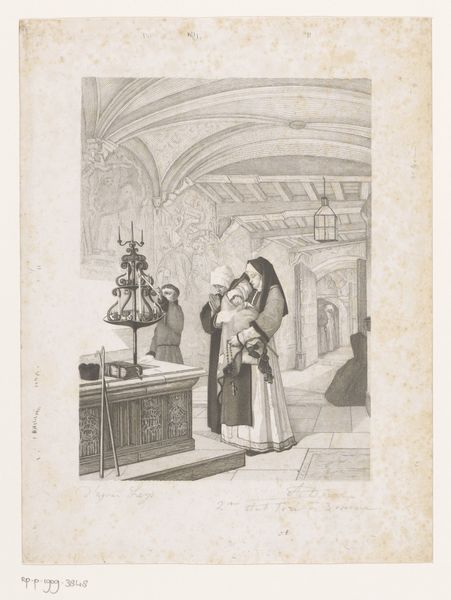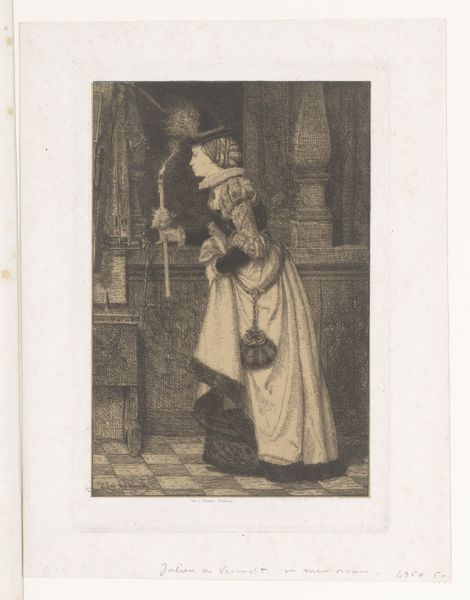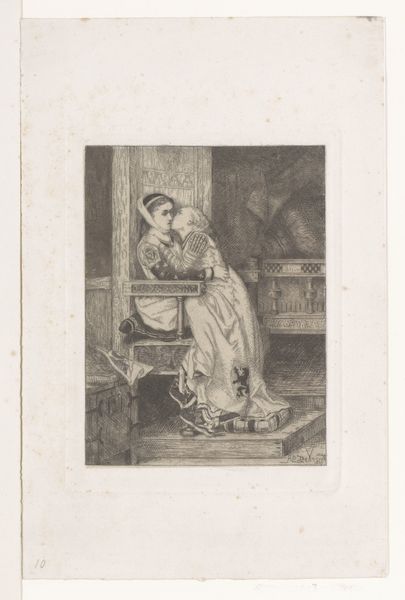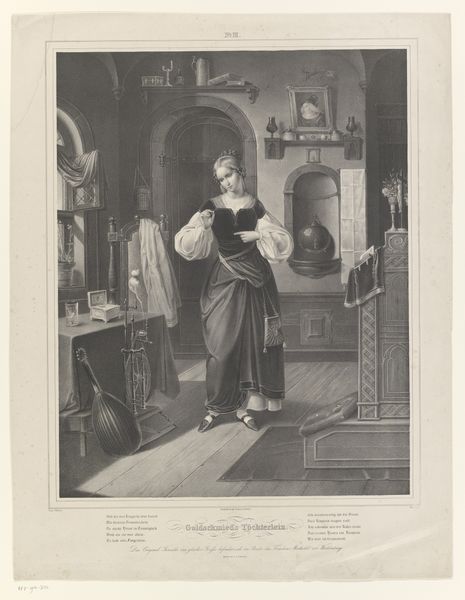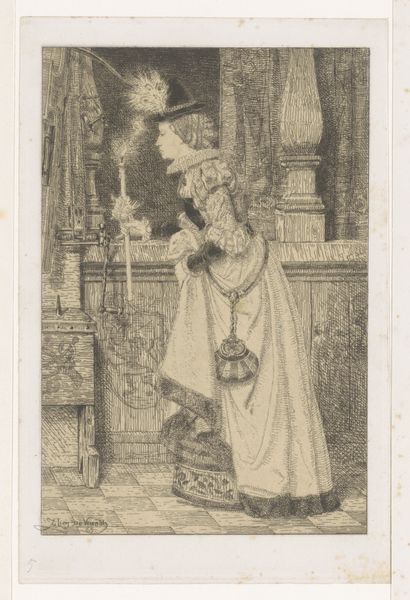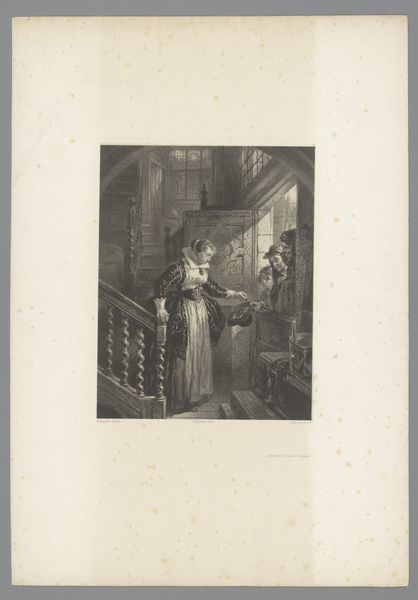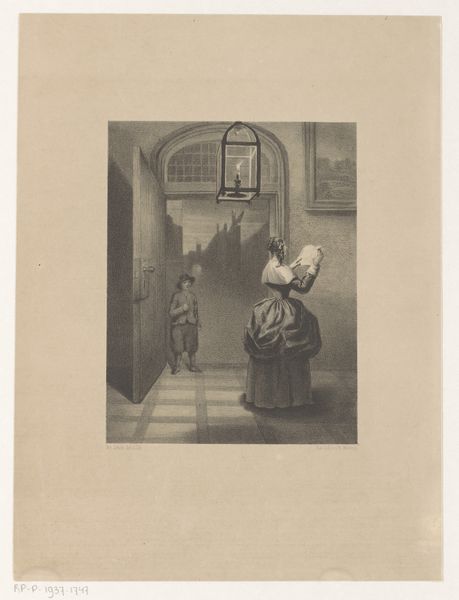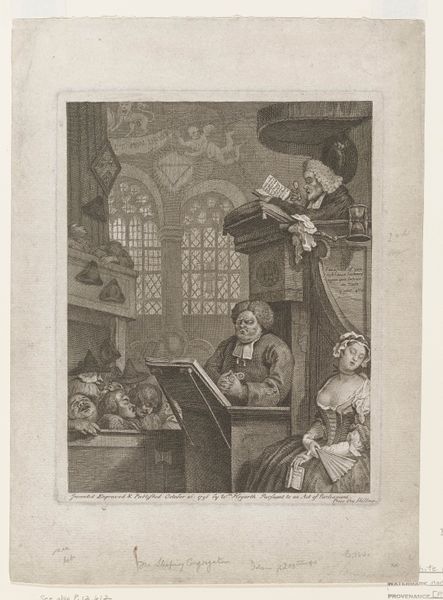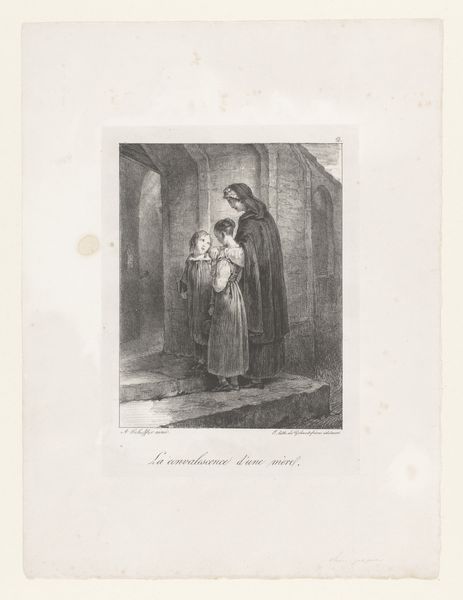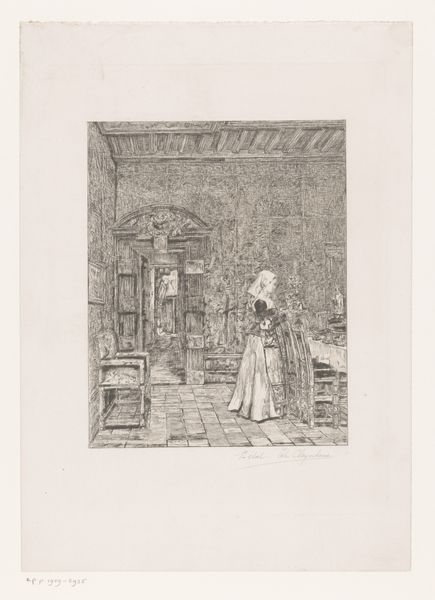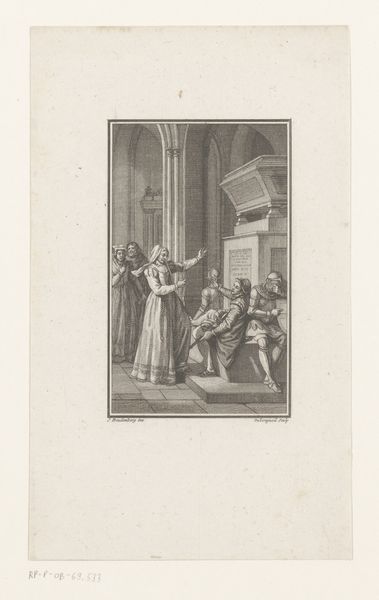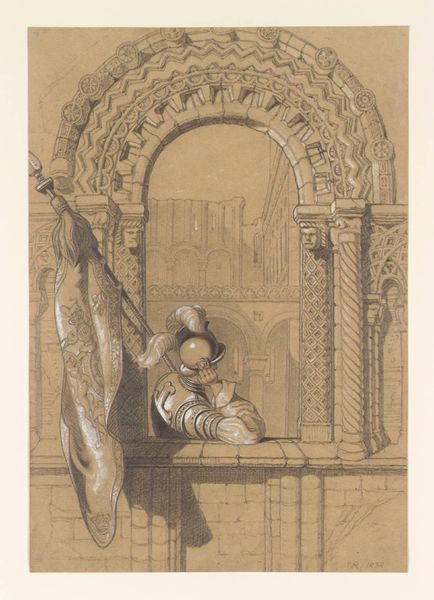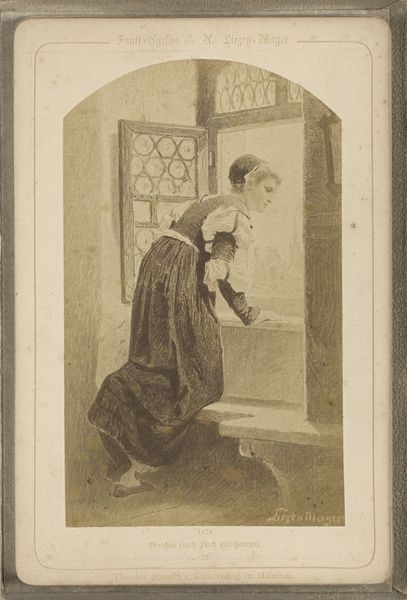
#
pencil drawn
#
aged paper
#
toned paper
#
light pencil work
#
photo restoration
#
pencil sketch
#
personal sketchbook
#
pencil drawing
#
19th century
#
pencil work
Dimensions: height 182 mm, width 132 mm
Copyright: Rijks Museum: Open Domain
Curator: This is Auguste Danse’s 1864 pencil drawing, "Two Women with a Child Praying in a Chapel," currently held in the Rijksmuseum collection. Editor: My first impression is one of quiet reverence. The subdued tones and light pencil work create an atmosphere of solemnity and intimacy. Curator: Absolutely. Consider the historical and social context here. The mid-19th century was a time of significant social upheaval, yet within these chapel walls, Danse captures a timeless moment of maternal devotion and spiritual solace. It raises questions about the roles and representations of women and religion during this period, and how faith served as an anchor amidst change. Editor: The composition is rather interesting. The figures are positioned quite close to the viewer, and that intimate proximity draws you into the sacred space. The artist also uses soft gradations and fine lines to convey texture and form. Look closely, and you see the fall of light on the women's robes, how they give the figures a sculptural weight and presence, anchoring the narrative. Curator: The rosary beads in the woman's hand are loaded symbols – of faith, piety, but also perhaps of the constraints placed upon women. Is it a symbol of personal empowerment or enforced conformity? How does the artist engage with those expectations through the lens of faith? Also, let’s not overlook the child, this innocent figure is passively exposed to such constraints from an early age. Editor: Well, on the one hand, yes. Yet from a formal perspective, that single pendant helps structure the whole piece; it leads the eye from the hands, and down. In structural terms, it unifies that whole part of the work. That dark against the pale also enhances the expressiveness of the composition, in the language of devotion. Curator: So, ultimately, Danse prompts us to contemplate the intersecting roles of motherhood, spirituality, and social expectation. The artwork remains potent in asking us what aspects of women's experiences, across different backgrounds, have changed. Editor: Yes. The harmony of the line work combined with tonal shading results in a compelling rendition that still speaks volumes about the way we understand light, shadow, and perspective. Curator: Indeed. Editor: An impressive pencil sketch that remains thought-provoking over time.
Comments
No comments
Be the first to comment and join the conversation on the ultimate creative platform.
